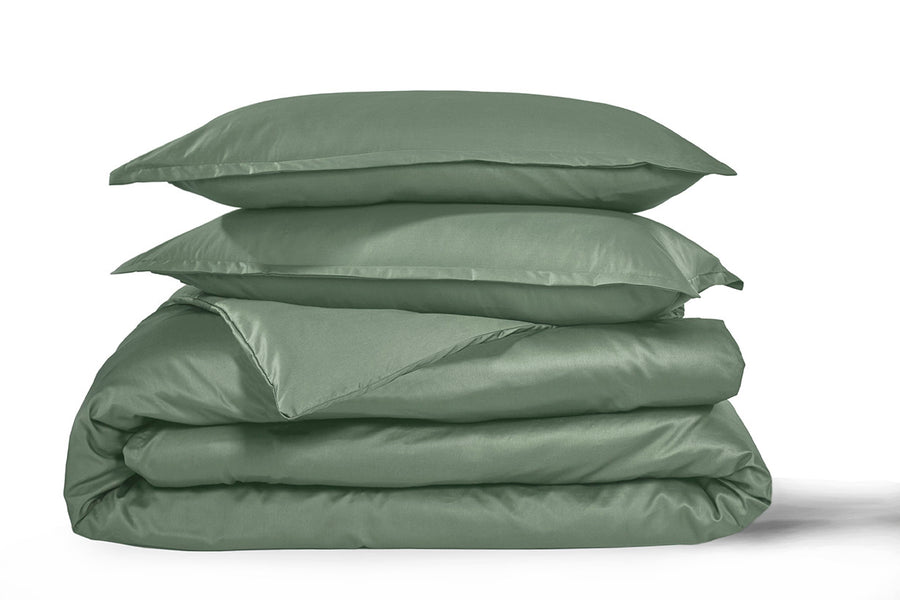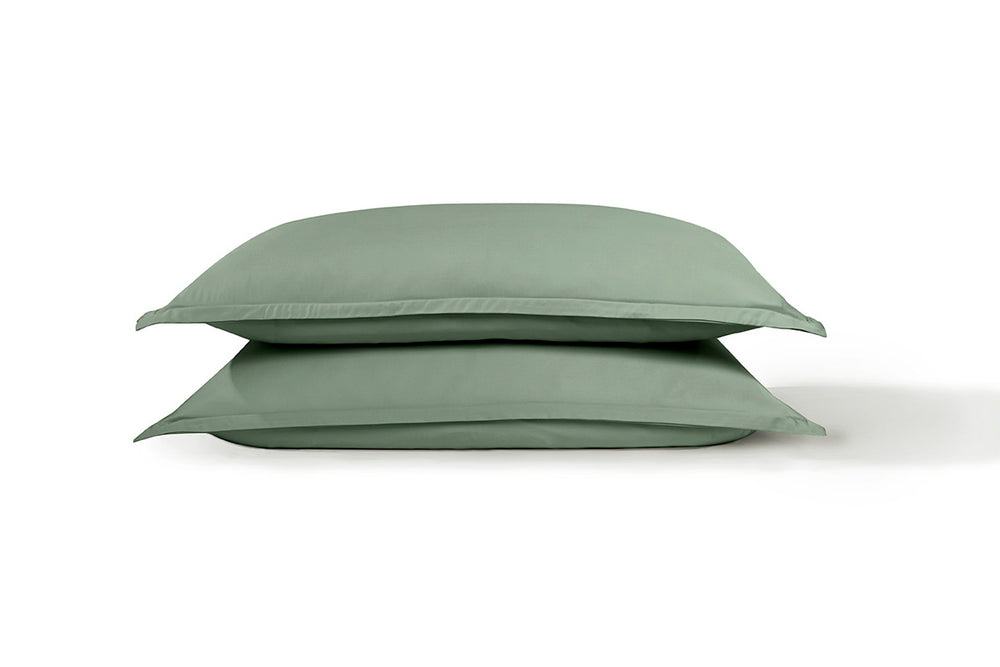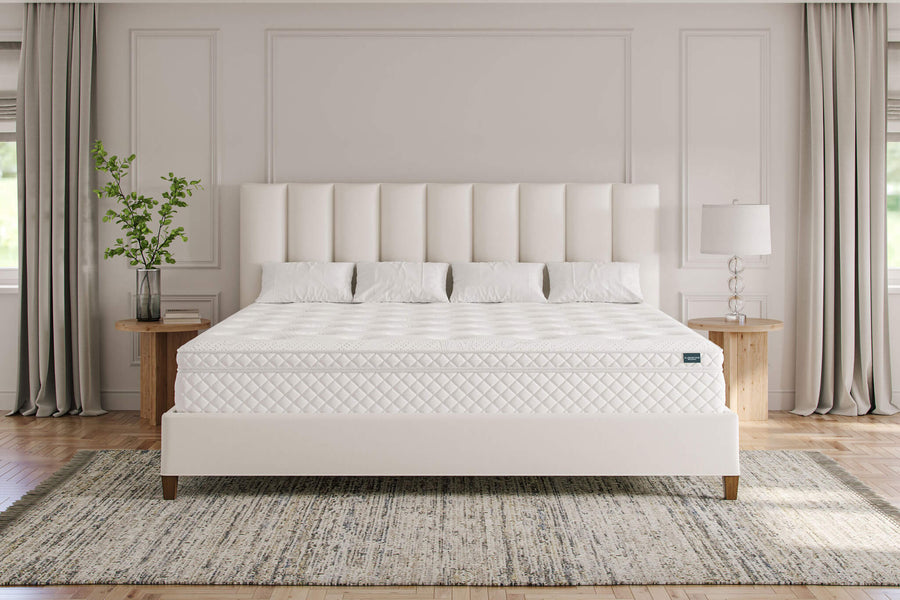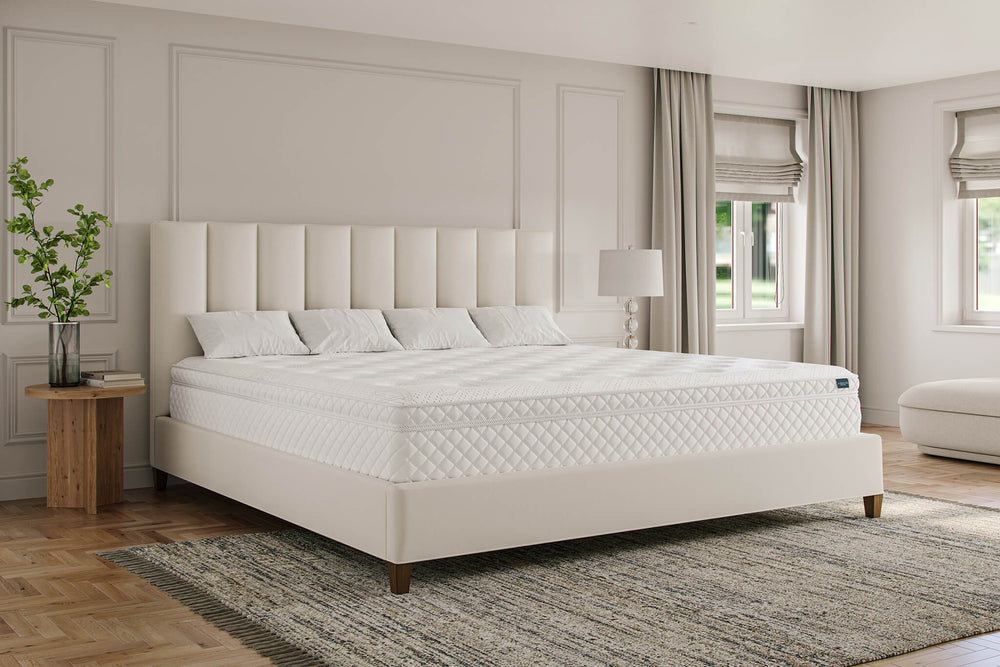How to Choose the Right Pillow for Your Sleeping Style
If you wake up with a sore neck and shoulders every morning, your pillow may be the culprit.
A bad pillow can wreak havoc on your sleep, leaving you with aches, pains, and restless nights. Or you may toss and turn, unable to find a comfortable position.
Choosing the right pillow for your sleeping style can transform your sleep, helping you wake up refreshed and pain-free.

In this article, we discuss how to find the perfect pillow for your needs by exploring the key features and sharing additional tips for your unique preferences.
What Pillow Is Best for Sleeping Correctly?
Choosing the right pillow ensures proper sleep posture, comfort, and overall sleep quality. The best pillow supports the natural alignment of your spine, reduces strain on your neck and shoulders, and accommodates your specific sleeping style.
An appropriate pillow can prevent aches and pains, reduce snoring, and help you wake up feeling refreshed. In contrast, a bad pillow can lead to discomfort, restless sleep, and long-term health issues such as chronic neck pain or headaches.
However, there’s no universally best pillow for everyone. The ideal pillow depends on several factors:
- Sleeping position
- Body type
- Personal preferences
- Health conditions
Let’s explore the key features of pillows and how to pick the right one depending on the above factors.
Key Features to Consider When Choosing a Pillow
If you want to choose the best pillow for you, you need to evaluate several features. That includes:
1. Loft
The loft of a pillow refers to its height when it is lying flat with no weight on it. The correct loft ensures that your head and neck are aligned with your spine, which is crucial for maintaining proper posture and preventing pain.
- High loft is best for side sleepers because it fills the space between the neck and the mattress, keeping the spine aligned.
- Medium loft is suitable for back sleepers, providing enough support to maintain natural neck curvature without pushing the head too far forward.
- Low loft is ideal for stomach sleepers because it minimizes neck strain by keeping the head closer to the mattress.
2. Firmness
Pillow firmness determines how much support it provides and can affect comfort based on sleeping position and personal preference.
Here are the best firmness options depending on your sleeping position:
- Soft: Conforms closely to the head and neck, which is suitable for stomach sleepers or those who prefer a plush feel.
- Medium: Balances comfort and support, making it versatile for most back and side sleepers.
- Firm: Offers strong support, maintaining shape and loft throughout the night, which is best for side sleepers.
3. Material
The material of a pillow influences its comfort, support, and durability. Common materials include:
- Memory foam: Contours to the shape of your head and neck for personalized support. This material is great for reducing pressure points but can retain heat.
- Latex: Provides a responsive and bouncy feel with excellent support and cooling properties. It’s naturally hypoallergenic and resistant to dust mites.
- Down: Creates a soft and plush feel, made from the fluffy undercoating of ducks or geese. It offers a luxurious feel but may lack support for some sleepers and is not suitable for allergy sufferers.
- Down alternative: Mimics the feel of down using synthetic fibers. It’s hypoallergenic and more affordable but may not offer the same level of support.
- Polyester: It’s economical and available in various firmness levels but is not as durable or supportive as other materials.
4. Breathability and temperature regulation
A pillow’s breathability affects its ability to regulate temperature and keep you cool during the night. You should look for pillows with breathable materials and designs that promote airflow. That includes:
- Memory foam with cooling gel: Helps dissipate heat and maintain a comfortable temperature.
- Latex: Naturally breathable, allowing for better air circulation.
- Down and down alternative: Typically breathable, but the quality of the cover and construction can impact airflow.
5. Hypoallergenic properties
For people with allergies, choosing a hypoallergenic pillow is essential to prevent allergic reactions and ensure a healthy sleep environment. Look for pillows with covers designed to repel allergens like dust mites and mold.
Latex and down alternative are naturally resistant to common allergens, while memory foam can also be hypoallergenic.
Additional Tips to Pick the Best Pillow for You
Selecting the perfect pillow requires more than just understanding your sleeping style and the key features of different pillows. Here are some additional tips to help you make the best choice for a comfortable and restful sleep:
- Choose memory foam or latex if you have neck or back pain
- Consider manufacturers that offer free trials before you commit to buying
- Don’t be afraid to experiment with different types of pillows to find the perfect fit
- Reassess your pillow choice periodically to ensure it continues to meet your comfort and support requirements
- Follow the manufacturer’s care instructions to keep your pillow in good condition
- Regularly fluff and air out your pillows to maintain their shape and freshness
- Replace your pillow every two years or sooner if you notice it has become lumpy, flat, or no longer provides the support you need
What Pillow Should Side Sleepers Use?
Side sleepers need specific support to maintain proper neck, shoulders, and spine alignment. Making the right choice can prevent discomfort and improve sleep quality.
A high-loft pillow is essential for side sleepers because it keeps the spine aligned and prevents the neck from bending awkwardly. In addition, a firm pillow provides the necessary support to maintain this alignment, preventing the head from sinking too deeply and causing strain on the neck and shoulders.
Memory foam and latex are excellent choices for side sleepers because they conform to the shape of your head and neck, offering personalized support. Contour pillows can also be beneficial, providing targeted support for the neck and shoulders.
For those who tend to sleep hot, pillows with cooling properties, such as breathable materials or cooling gels, can help dissipate heat and maintain a comfortable temperature throughout the night.
Is It Okay to Sleep Without a Pillow?
Sleeping without a pillow can be beneficial for certain sleeping positions and specific health conditions, but it may not be suitable for everyone. For example, pillows can elevate the head too much and cause discomfort for stomach sleepers. That’s why they can benefit from sleeping without one.
In some cases, sleeping without a pillow can help maintain a more natural spine alignment, especially if the mattress provides adequate support. This can benefit those who experience back pain or discomfort due to improper spinal alignment caused by high-loft pillows.
However, sleeping without a pillow is not the best idea for back and side sleepers. Back sleepers might experience neck strain and side sleepers could suffer from misalignment of the neck and shoulders. As a result, they could experience discomfort and disrupted sleep.
Sleep Better on an Alaskan King Mattress
Choosing the right pillow is crucial for avoiding discomfort and getting better sleep. To do that, you need to evaluate the loft, firmness, material, breathability, and hypoallergenic properties. You should also consider your sleeping position, preferences, and body type.
But a good pillow isn’t the only thing that can take your sleep to the next level.
A great mattress can support your body throughout the night and ensure you wake up feeling pain-free and refreshed.
Alaskan King mattresses offer unmatched sleeping surface, quality, and support to sleepers of all shapes and sizes. We craft these oversize mattresses with utmost care to ensure you get the sleep you deserve.
Get an Alaskan King mattress and discover the true meaning of interrupted sleep.








